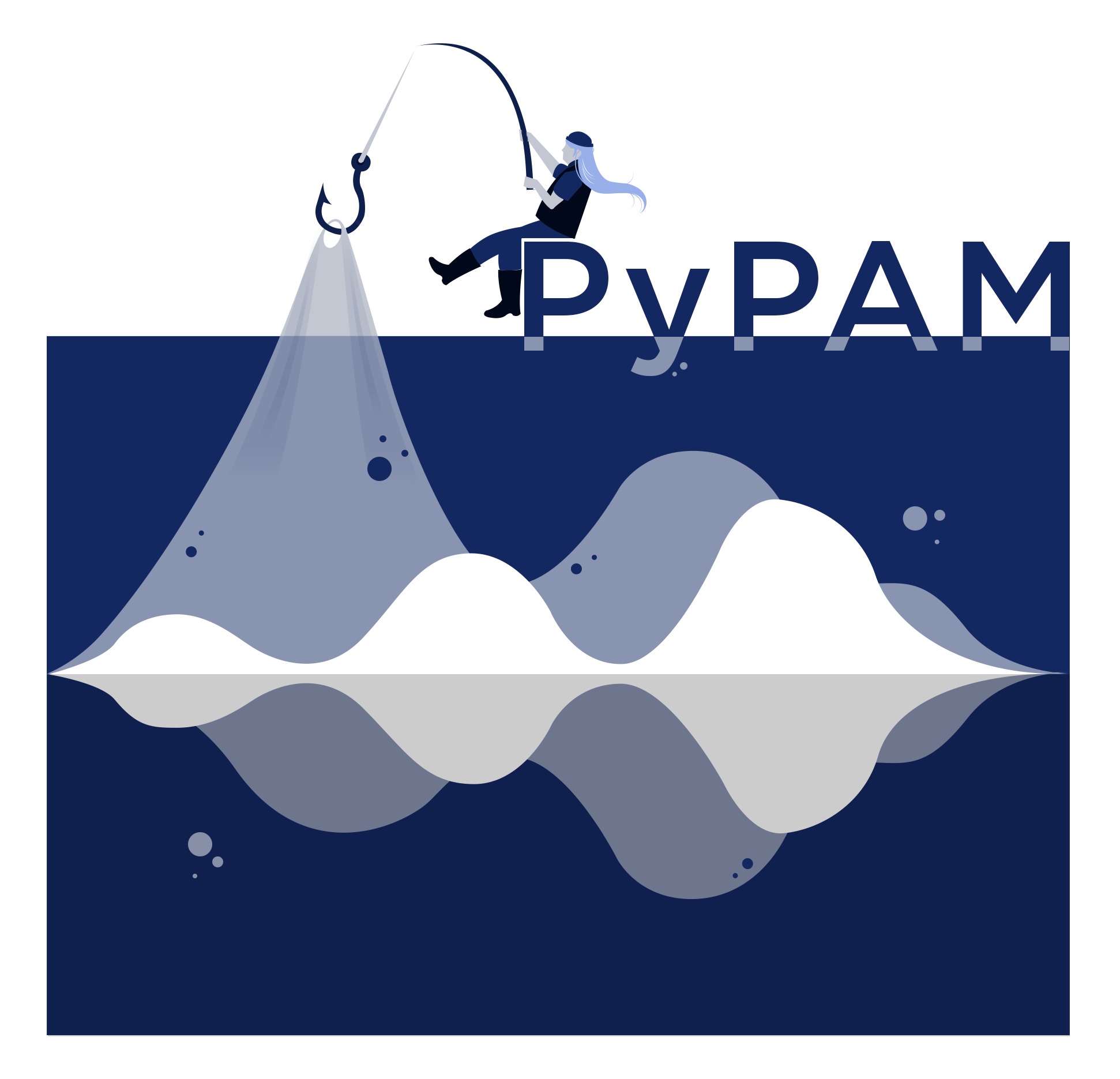PyPAM logo, designed by my friend and colleague
Stan Panier PyPAM is a python package developed at VLIZ to process long-term underwater acoustic data. It has been used in several publications (Parcerisas et al., 2023; Parcerisas et al., 2023; Parcerisas et al., 2023; Rey Baquero et al., 2021). MBARI has developed another package, Pypam-Based-Processing (PBP) which enhaces pypam’s capabilities to process data in a more efficient and faster way to obtain hybrid millidecade bands sound levels in daily netcdf files, 1-minute resolution.
For more information, please visit the repository or the documentation.
References
Conference Articles
-
CLUSTERING, CATEGORIZING, AND MAPPING OF SHALLOW COASTAL WATER SOUNDSCAPES
Clea Parcerisas, Dick Botteldooren, Paul Devos, and 1 more author
In Proceedings of the 10th Convention of the European Acoustics Association Forum Acusticum 2023, Sep 2023
For many of its inhabitants, the underwater soundscape is a rich source of information that may be crucial for their survival. Moreover, in shallow coastal waters where visibility is poor, the importance of sound is emphasized. Yet coastal waters are also rich in anthropogenic sounds which may disturb the ecosystem. Passive Acoustics Monitoring (PAM) is a flexible, non-invasive, and cost-effective solution to acquire information at habitat or community level. Studying the acoustic scene of a habitat in a global, holistic way is known as soundscape analysis. However, there are currently no standardized methods to characterize and understand marine soundscapes in an automated way. Here we propose a methodology for clustering underwater soundscapes and linking the obtained categories to environmental parameters in space and time. This is done using explainable artificial intelligence. The methodology is applied to a PAM dataset collected in the Belgian Part of the North Sea. The obtained categories focus on background sound, which includes all combinations of sounds that occur under certain conditions at specific places. With this information, the marine acoustic scene and its change over space and time can be mapped for the whole area of interest.
-
Studying the Soundscape of Shallow and Heavy Used Marine Areas: Belgian Part of the North Sea
Clea Parcerisas, Dick Botteldooren, Paul Devos, and 2 more authors
In The Effects of Noise on Aquatic Life, Sep 2023
The impact of anthropogenic sound on marine fauna is a growing concern, particularly in shallow, coastal, and heavily exploited marine areas such as the Belgian Part of the North Sea (BPNS). Understanding the ecosystem and its limits in these areas is necessary to protect these areas and ensure their sustainable use. To quantify this impact, characterizing and analyzing the soundscape is crucial. However, analyzing soundscapes in shallow and heavily exploited marine areas poses several challenges and particularities. Bio-fouling, flow-noise, unknown sound sources, and masking compromise propagation. This chapter provides an overview of the soundscape in the BPNS and the inherent challenges to measure and analyze it. Some of the challenges are exemplified using data collected in the framework of the LifeWatch Broadband Acoustic Network.
Journal Articles
-
Categorizing Shallow Marine Soundscapes Using Explained Clusters
Clea Parcerisas, Irene T. Roca, Dick Botteldooren, and 2 more authors
Journal of Marine Science and Engineering, Mar 2023
Natural marine soundscapes are being threatened by increasing anthropic noise, particularly in shallow coastal waters. To preserve and monitor these soundscapes, understanding them is essential. Here, we propose a new method for semi-supervised categorization of shallow marine soundscapes, with further interpretation of these categories according to concurrent environmental conditions. The proposed methodology uses a nonlinear mapping of short-term spectrograms to a two-dimensional space, followed by a density-based clustering algorithm to identify similar sound environments. A random forest classifier, based on additional environmental data, is used to predict their occurrence. Finally, explainable machine learning tools provide insight into the ecological explanation of the clusters. This methodology was tested in the Belgian part of the North Sea, and resulted in clearly identifiable categories of soundscapes that could be explained by spatial and temporal environmental parameters, such as distance to the shore, bathymetry, tide or season. Classifying soundscapes facilitates their identification, which can be useful for policy making or conservation programs. Soundscape categorization, as proposed in this work, could be used to monitor acoustic trends and patterns in space and time that might provide useful indicators of biodiversity and ecosystem functionality change.
-
Comparison of Two Soundscapes: An Opportunity to Assess the Dominance of Biophony Versus Anthropophony
Maria Paula Rey Baquero, Clea Parcerisas, Kerri Seger, and 6 more authors
Oceanography, Dec 2021
